Lua (love2d Framework),281 bytes
j,p,z,w,v=love,math,100,200,90 g,r=j.graphics,p.rad c=g.circle function j.load(b)n,k=b[1],b[2]m= 360/k::t::a=function(i)return z*p.sin(r(m*i +v))+w,z*p.cos(r(m*i+v))+w end c("line",w,w,z)for i=1,k do x,y=a(i)c("fill",x,y,3)l=(i*n)%k d,e=a(l)g.line(x,y,d,e)end g.present()goto t end
If this is copied in a main.lua file and run it will show it on screen
output for n=2,k=22
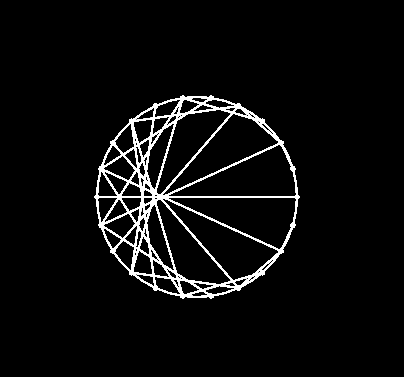
also beware if you run it, that it will probably tell you that it is frozen because it is in an endless draw function in the load function
but it will show it on the screen.
Also here is a clean version
--definitions of everything
j,p,z,w,v=love,math,100,200,90
g,r=j.graphics,p.rad c=g.circle
function j.load(b)
--get the parameters
n,k=b[1],b[2]
m= 360/k
--goto label
::t::
--function which takes a point number as input and outputs the x,y adds also 90 to it because why ever love starts
a=function(i)return z*p.sin(r(m*i +v))+w,z*p.cos(r(m*i+v))+w end
--draw the circle
c("line",w,w,z)
for i=1,k do
--get point position and draw it
x,y=a(i)
c("fill",x,y,3)
--calculate and print the line to the other point
l=(i*n)%k
d,e=a(l)
g.line(x,y,d,e)
end
--show it on screen
g.present()
goto t
end
If someone also wants to play around with it here a version which you can
change the n with up and down and the k with left and right arrows :)
--definitions of everything
j,p,z,w,v=love,math,100,200,90
g,r=j.graphics,p.rad c=g.circle
function j.load(b)
--get the parameters
n,k=b[1],b[2]
end
function u(n,k)
--function which takes a point number as input and outputs the x,y adds also 90 to it because why ever love starts
a=function(i)return z*p.sin(r(m*i +v))+w,z*p.cos(r(m*i+v))+w end
--draw the circle
m= 360/k
c("line",w,w,z)
for i=1,k do
--get point position and draw it
x,y=a(i)
c("fill",x,y,3)
--calculate and print the line to the other point
l=(i*n)%k
d,e=a(l)
g.line(x,y,d,e)
end
end
function j.draw()
--n=n+0.001
--k=k+0.01
u(n,k)
love.graphics.print("n: "..n.."\nk: "..k,0,0)
end
function j.keypressed(ke,s)
k=k*1
if ke== "up"then
n=n+1
elseif ke=="down" then
if n >1 then n=n-1 end
elseif ke=="right" then
k=k+1
elseif ke=="left" then
if k>1 then
k=k-1
end
end
end
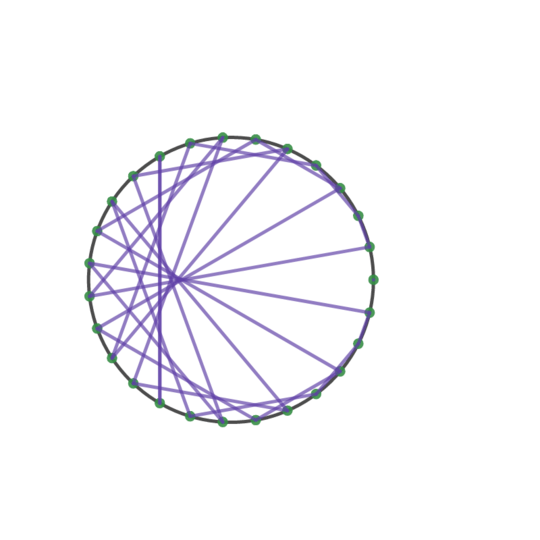

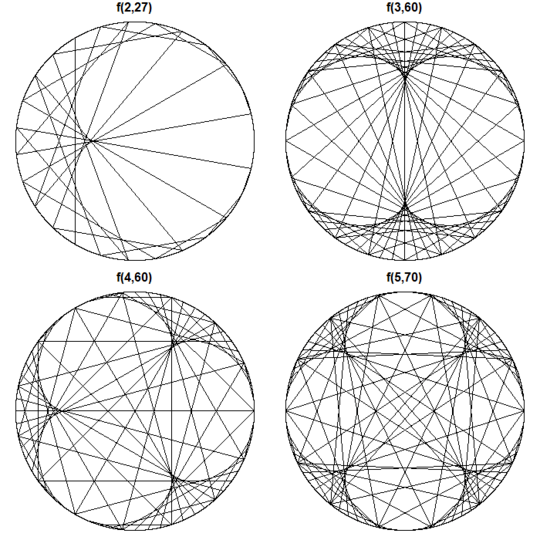


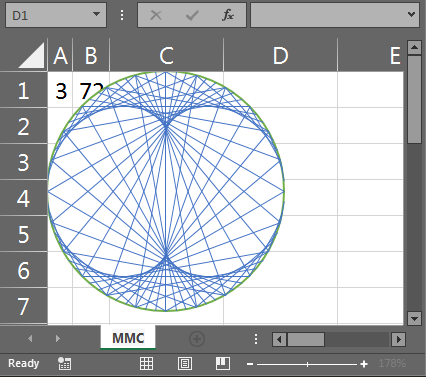
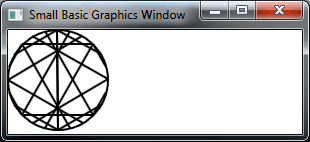
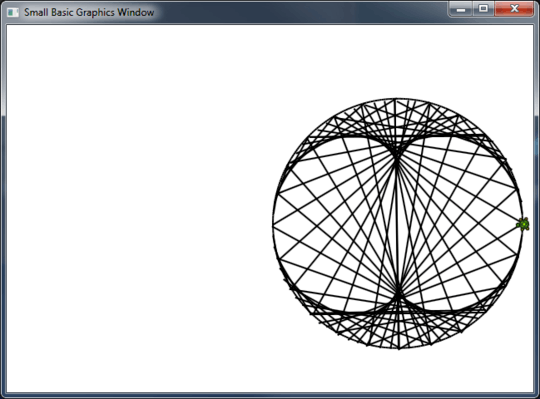

From the looks of it, this seems to be Cremona's method for cardioid generation. Related Mathematica SE question.
– JungHwan Min – 2018-07-13T19:23:20.7874Your description seems to confuse
KwithNsometimes. I had to read it a couple times to see what you meant. – mypetlion – 2018-07-13T19:36:23.913What do we need to draw, specifically? Just the lines? Circle and the points too? – JungHwan Min – 2018-07-13T19:42:08.080
3
Frankly, this question should have been posted on the Sandbox and left there for some time (at least a few days). However, since this challenge is already posted, I advise that you keep it here, but make as many clarifications as possible before someone answers the question (to prevent invalidating answers).
– JungHwan Min – 2018-07-13T19:46:06.0433I like this challenge, and I don't want it to end up being closed. I therefore suggest clarifying what exactly has to be included in the output: the circle, the points and the lines, the lines and the points, the lines only, etc. – Mr. Xcoder – 2018-07-13T19:55:22.810
I've been away for a bit, but when did PPCG get $\LaTeX$ again? – Beta Decay – 2018-07-15T11:47:24.820